Mad Hedge Technology Letter
November 6, 2023
Fiat Lux
Featured Trade:
(HIGHER FOR LONGER IS NOT OFF THE TABLE)
(BIG TECH), (QQQ), (AAPL), (GOOGL), (META), (TSLA)
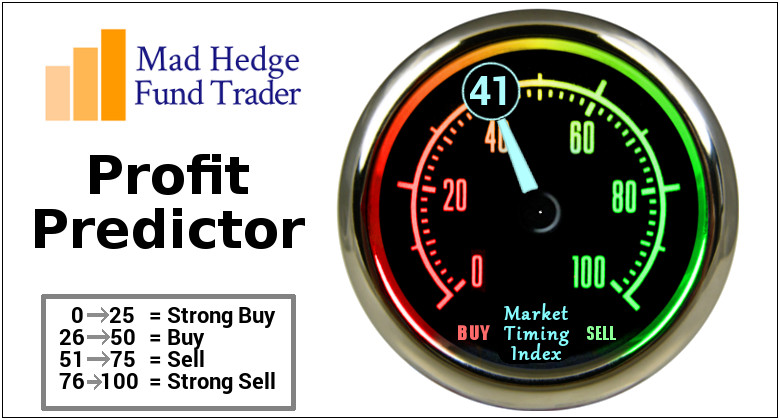
Mad Hedge Technology Letter
November 6, 2023
Fiat Lux
Featured Trade:
(HIGHER FOR LONGER IS NOT OFF THE TABLE)
(BIG TECH), (QQQ), (AAPL), (GOOGL), (META), (TSLA)

Tech (QQQ) earnings turned out to produce some positive performances.
Dominant companies can produce dominant earnings even in troubled times.
So what is the problem?
The sales outlook underwhelmed as the American consumer and business keep getting stretched to the limit.
I believe that traders shouldn’t expect a quick turnaround of sales projections for 2024 unless there are some material structural improvements in the business and consumer environment.
No savior is coming for 2024.
All signs point to more uncertainty and not less and rightly so as high inflation has only been replaced by a decrease in the rate of inflation.
Things are still expensive and that means less opportunity for tech to build a growth story.
Apple, Alphabet, Meta, and Tesla all gave investors reason to rub smiles off faces.
From Apple’s unimpressive holiday outlook to Alphabet’s tepid cloud computing sales results, a recurring theme for the group was weakness.
Meta warned that the year ahead is looking less predictable, while Tesla raised concerns that demand for electric cars is starting to weaken.
Despite Tesla's missing earnings, the group is poised to surpass the 36% increase estimates called for before earnings season began.
The tech sector in the S&P 500 still carries a nearly 36% premium to the index on a forward price-to-earnings basis, per data compiled by Bloomberg Intelligence.
There’s a lot of AI hype, but not every company is market-ready.
Everything can change in a heartbeat if there is economic or geopolitical upheaval, which would directly impact stocks.
The market is still pricing in no spreading of military activity as it looks through it as a self-contained area.
Therefore, the pendulum has swung the completely opposite direction as the U.S. 10-year treasury yield has dropped from 5% to 4.6%.
The strength in treasuries could be short-lived, because several have told me that traders are jumping back into the short-term trade which would signal higher for longer.
The Fed Futures show that the first 25 basis rate is forecasted for May 2024 with 2 more consecutive .25% rate cuts following the first.
The American consumer just might have enough juice for one more splurge that would then push back rate cuts from May to somewhere closer to July or August.
Therefore, it’s easy for me to see how this 6.5% surge has a little longer follow through only to soon clash with a “higher for longer” narrative.
The true tailwind for tech stocks here is that much of the bad news has been priced in and any violent surge in treasury yields seems like a low probability for the last 7 weeks of the year, unless another global conflict breaks out.
Seasonal buying could mean that November is more positive than negative for tech stocks and any big draw down should be bought in a quality tech name. December could be a harder slog for tech.
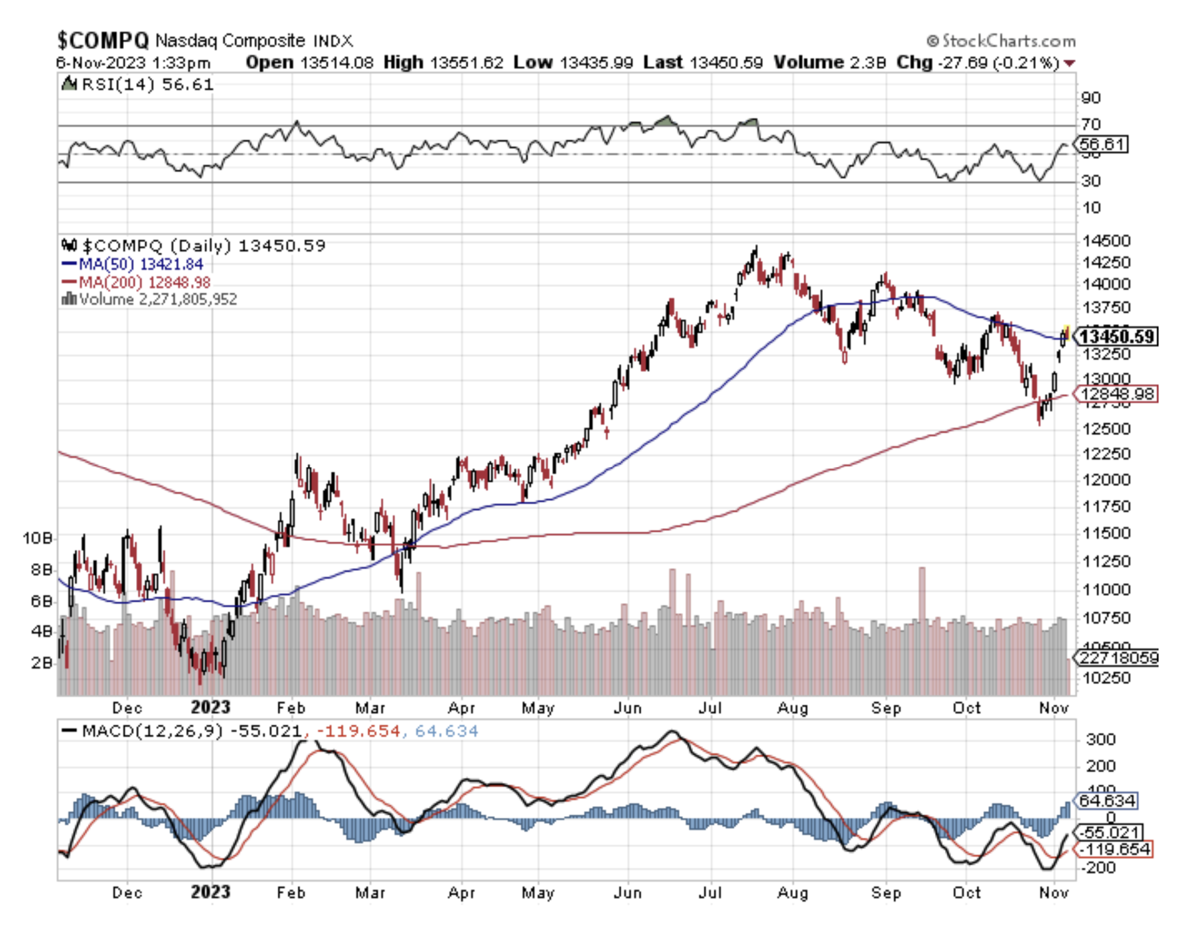
Mad Hedge Technology Letter
October 30, 2023
Fiat Lux
Featured Trade:
(WHY MEGACAP TECH IS THE ONLY SHOW IN TOWN)
(BIG TECH), (ETF), (COMPQ)

Megacap stocks continue to make hay when the sun shines in 2023.
The question is, why?
After all, many other great companies have arguably much better valuations, fundamentals, and affordable PE ratios.
Big tech stocks are expensive, yet buyers keep maneuvering to bid up the stock.
What gives?
The surge in the most hated sectors last year has been the main driver of this year’s stellar equity performance.
If we strip out tech, performance is actually negative if you can believe it.
The question is, why are professional managers seemingly chasing big tech like no other stocks exist?
The answer is more simplistic than you may think.
For investment managers, generating “alpha” is necessary to limit “career risk.”
If a manager underperforms their relative benchmark index for a time that is noticeable, they start to get in the firing line.
Currently, there are two drivers for the mega-capitalization stock chase. First, these stocks are highly liquid, and managers can quickly move money into and out without significant price movements.
The second is the passive indexing effect.
As investors change their investing habits from buying individual stocks to the ease of buying a broad index, the inflows of capital unequally shift into the largest capitalization stocks in the index.
Over the last decade, the inflows into exchange-traded funds (ETFs) have exploded.
That ETF issuance surge and the assets’ growth under management fuel the performance of the top 10 stocks. As we discussed previously:
Therefore, as investors buy shares of a passive ETF, the shares of all the underlying companies must be purchased.
Given the massive inflows into ETFs over the last year and subsequent inflows into the top-10 stocks, the mirage of market stability is not surprising.
Given stick high interest rates, inflation, and reversal of monetary liquidity post-pandemic, the risk of recession is higher than normal.
Higher interest rates, in particular, currently pose the largest threat to small and medium-sized companies.
The largest 10% of companies represent 62% of the overall non-financial market cap of the S&P 1500.
Smaller firms do not have the massive cash balances the megacap companies hold which puts them at a disadvantage.
As that debt wall of term loans hits over the next few years, higher borrowing costs are going to raise the risk of defaults and bankruptcies.
Tightening financial conditions have seen corporate bankruptcies rise by 71% since last year. If financial conditions are still elevated over the next few years, that bankruptcy risk increases markedly.
They weren’t able to lock into long-term loans at almost zero interest rates and pile it high in the money markets at variable rates.
Ultimately the pain for US small- and mid-cap companies will trigger the recession.
Portfolio managers must chase the market higher or potentially suffer career risk. Therefore, the easiest place to allocate cash is the mega-capitalization companies with low risk of bankruptcy or default and extremely high liquidity.
With the concentration of risk in a handful of stocks, the markets are set for a rather vicious cycle.
The concentration at the top keeps getting worse and I do believe we are one cycle away from the top 7 tech stocks comprising 35% of the total equity market.
It’s quite bizarre that something even remote could materialize, but that is where we stand where investors are looking for safety.
Throw in that most investors with a high net worth aren’t young, the tendency to go with a more conservative approach will shine through.
Funnily enough, tech investments in the big 7 constitute as conservative and it’s really true when I say that big tech has aged with its investor base.

Mad Hedge Technology Letter
February 19, 2021
Fiat Lux
Featured Trade:
(ARE TECH STOCKS IRRATIONAL?)
(TSLA), (PYPL), (BIG TECH)
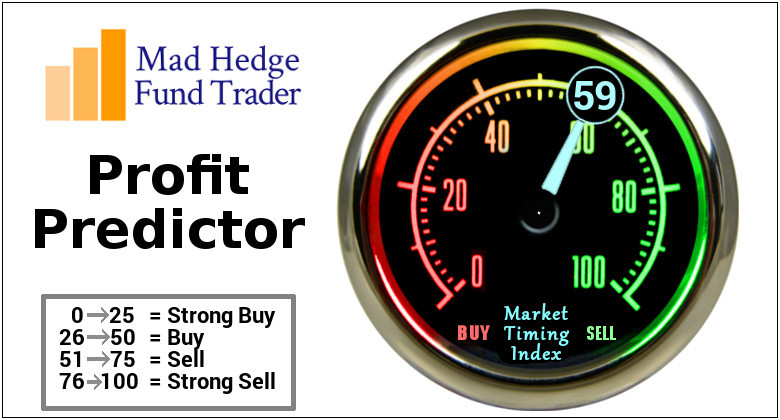
It’s no joke – we are in the nosebleed section with tech stocks here.
But that doesn’t mean there is no more room to run.
Euphoria can continue until it doesn’t, and that’s where we are right now in the Nasdaq as we close in on 14,000 points.
If we take a minute to understand the different opinions out there, overall, people think tech isn’t cheap right now and rightly so.
Out of all assets, bitcoin and U.S. tech stocks are considered in bubble territory right now.
A survey contributed by market professionals in late January found that 89% of professionals believe we are in a bubble.
In the bubble, bitcoin is the posterchild of bubble activity.
The next so-called bubble poster child is big cap U.S. tech stocks.
Hard not to say no when the likes of fintech giants PayPal (PYPL) are up 25% YTD.
Another name that has seen insatiable appreciation in underlying shares is electric vehicle (EV) maker Tesla (TSLA) peaking at $880 and consolidating back to $790 today.
Tesla, meanwhile, also saw a massive climb in its share price in 2020 and that has extended into the new year.
CEO Elon Musk was crowned the world’s richest person.
The stock is up more than 700% year over year.
It is not exactly certain what might take down these robust names.
The number of tailwinds is still plentiful.
Loose monetary situations supportive of bubbles will stick around with the public health situation lingering for longer than first anticipated.
The health dilemma is highly likely to spill over into 2022 at this point.
More investors say the rollout of vaccines deployment is failing (41%) than those who said it’s been better than expected (22%).
Only half of those surveyed see normality returning by December.
Then checking in with the latest from a big American investment bank validated these survey numbers with massive in-flow of equity capital.
Brokers have been busy and rightly so as equities have been frontpage news lately with speculative mania reaching fever pitch.
A record net 25% of investors surveyed by the American investment bank this month are taking higher-than-normal risks.
Cash levels slumped to the lowest since 2013, while optimism on cyclical risk assets rose to the highest since 2011.
The yields out there have never been lower and bearing more risk is required to produce the same number of gains.
Unrivaled optimism has been percolating with 84% of fund managers expecting global corporate profits to improve over the next 12 months.
For the first time in a year, investors say companies should focus on spending rather than improving their balance sheets.
We are in the midst of going from balance sheet protection to really letting it loose with capital spending and the synergies that surround it.
Easy money and upcoming health solutions are fueling tech investors into reflation trades of all stripes but mostly trading that is hypertargeting towards the best of tech.
Even if a mini correction presented itself, the mentality of “buy the dip” has strengthened since last March and it will really take a mega black swan event to topple this momentum.
In short, the tech narrative is strengthening with not only the gold standard of tech monopolizing even more revenue, but the second tier is gaining ground in terms of percentage appreciation as well.
The secular trends that buttress tech have also fortified over the pandemic and no government, big or small, has proven a match for proper regulating big tech.

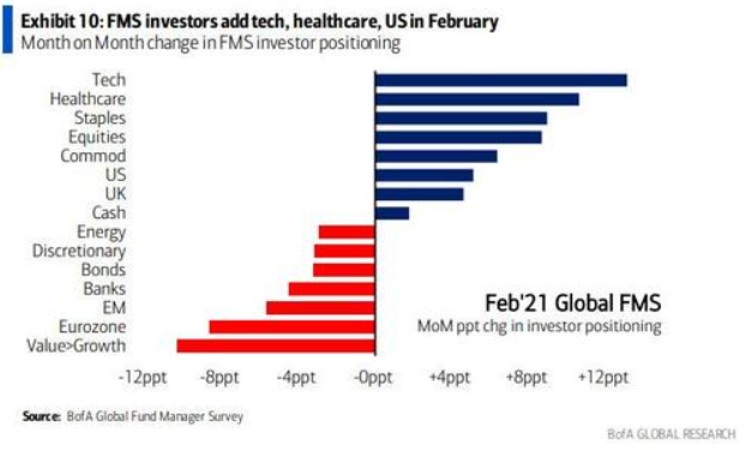
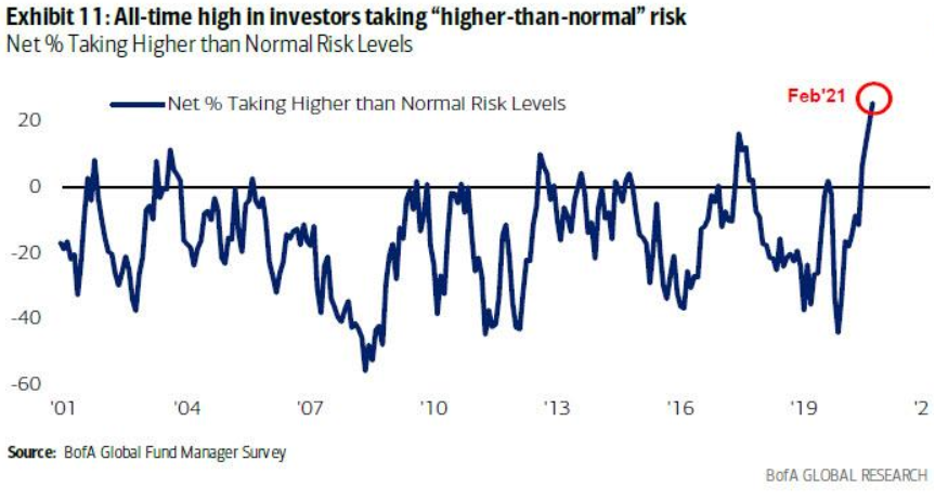
Mad Hedge Technology Letter
February 1, 2021
Fiat Lux
Featured Trade:
(A SLAM DUNK TECHNOLOGY)
(BIG TECH)
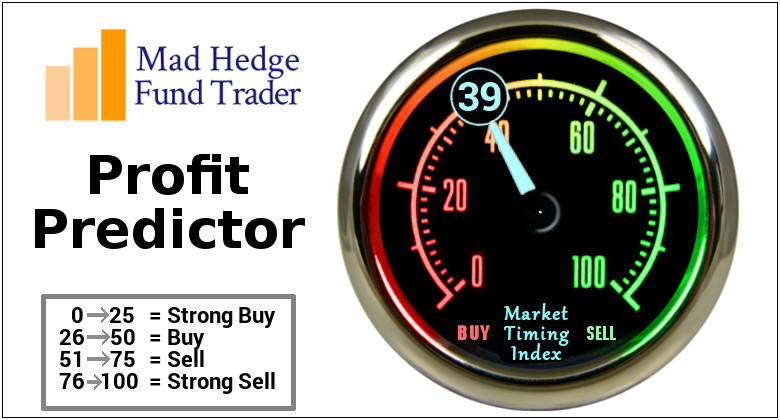
SLAM is better known as Simultaneous Localization and Mapping technology and any tech investor needs to know about how it works because it could power your future tech portfolio.
I would emphasize the ‘Localization & ‘Mapping’ as the main portion of SLAM.
SLAM is essentially an optimization solution.
For a machine to comprehend, the device’s sensors collect visual data from the physical world in the form of reference points.
These points aid the machine in deciphering between limits.
Google’s AR platform, Tango, uses advanced SLAM to interact with the surroundings.
The device tries to simultaneously localize by finding the location of sensors with reference to its surroundings.
Then the technology will map the layout and framework of the environment that the device is in.
This is powered by various algorithms that simultaneously localize and map the objects.
Did you get all that?
Measurements are constantly taken as the device moves through the surroundings and SLAM diminishes inaccuracies of the measurement method.
It then predicts the position of unknown variables, like unknown points on 3D objects in the machine’s point of view.
One real-life example is how Google uses SLAM for its self-driving cars.
It is easy to navigate spaces that are known.
But what about unknown terrains?
SLAM negotiates an unknown environment and navigates through spaces by filling out the solution with the algorithms.
SLAM is best applicable for situations with no prior reference point.
Google’s driverless cars deploy autonomous technology that operates self-driving cars using a roof-mounted LIDAR sensor to create a 3D map of its surroundings.
A rapid response is critical in this technology since the car is moving at high speeds and acceleration.
These mappings are augmented over the already existing Google maps.
Another simple application of SLAM tech is the food business.
Machine-based SLAM technologies will most likely add value in fast food environments and could include 3D Time of Flight, for tasks like locating and placing a hot dog in a bun and placing items on a plate.
Thermal imaging could also help keep monitor the readiness of the food.
These technologies could enable robotic tasks that could include automated slicing and cutting on pre-prepped food materials, applying toppings or spices.
Combining such a low-cost sensor with a robot arm or mechanism and constraining the food production area could provide an ideal platform for defined automated tasks.
Navigation on Mars also uses SLAM tech wherein landmarks have to be revisited several times.
Autonomous systems are the obvious applications for SLAM and companies like Cortica have already built their well-known technology in localization and mapping for driverless cars in Israel.
Every tech behemoth has already made inroads in SLAM tech making the stakes higher than ever and race to refine it.
Apple in its attempt to enter the AR/VR space built ARKit that heavily depends on SLAM.
With the pandemic and many businesses shuttered, there will inevitably be less human-to-human contact giving way to robots or machines that utilize SLAM technology supplemented by 3D stereo vision, and LiDAR technology.
This will successfully provide real-time environment mapping and navigation.
Whether it is fast food, mars expeditions, autonomous driving, it is clear now that there is an influential place for this technology to drive revenue for these big tech companies that are currently refining the technology.
This could widen the capabilities between the tech Goliaths and smaller firms.
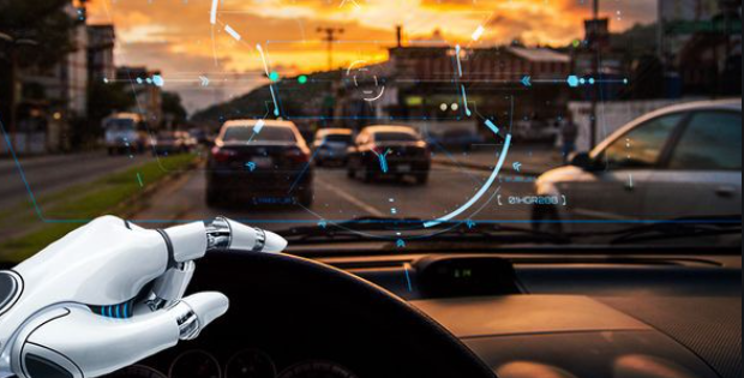
Legal Disclaimer
There is a very high degree of risk involved in trading. Past results are not indicative of future returns. MadHedgeFundTrader.com and all individuals affiliated with this site assume no responsibilities for your trading and investment results. The indicators, strategies, columns, articles and all other features are for educational purposes only and should not be construed as investment advice. Information for futures trading observations are obtained from sources believed to be reliable, but we do not warrant its completeness or accuracy, or warrant any results from the use of the information. Your use of the trading observations is entirely at your own risk and it is your sole responsibility to evaluate the accuracy, completeness and usefulness of the information. You must assess the risk of any trade with your broker and make your own independent decisions regarding any securities mentioned herein. Affiliates of MadHedgeFundTrader.com may have a position or effect transactions in the securities described herein (or options thereon) and/or otherwise employ trading strategies that may be consistent or inconsistent with the provided strategies.
This site uses cookies. By continuing to browse the site, you are agreeing to our use of cookies.
OKLearn moreWe may request cookies to be set on your device. We use cookies to let us know when you visit our websites, how you interact with us, to enrich your user experience, and to customize your relationship with our website.
Click on the different category headings to find out more. You can also change some of your preferences. Note that blocking some types of cookies may impact your experience on our websites and the services we are able to offer.
These cookies are strictly necessary to provide you with services available through our website and to use some of its features.
Because these cookies are strictly necessary to deliver the website, refuseing them will have impact how our site functions. You always can block or delete cookies by changing your browser settings and force blocking all cookies on this website. But this will always prompt you to accept/refuse cookies when revisiting our site.
We fully respect if you want to refuse cookies but to avoid asking you again and again kindly allow us to store a cookie for that. You are free to opt out any time or opt in for other cookies to get a better experience. If you refuse cookies we will remove all set cookies in our domain.
We provide you with a list of stored cookies on your computer in our domain so you can check what we stored. Due to security reasons we are not able to show or modify cookies from other domains. You can check these in your browser security settings.
These cookies collect information that is used either in aggregate form to help us understand how our website is being used or how effective our marketing campaigns are, or to help us customize our website and application for you in order to enhance your experience.
If you do not want that we track your visist to our site you can disable tracking in your browser here:
We also use different external services like Google Webfonts, Google Maps, and external Video providers. Since these providers may collect personal data like your IP address we allow you to block them here. Please be aware that this might heavily reduce the functionality and appearance of our site. Changes will take effect once you reload the page.
Google Webfont Settings:
Google Map Settings:
Vimeo and Youtube video embeds:
